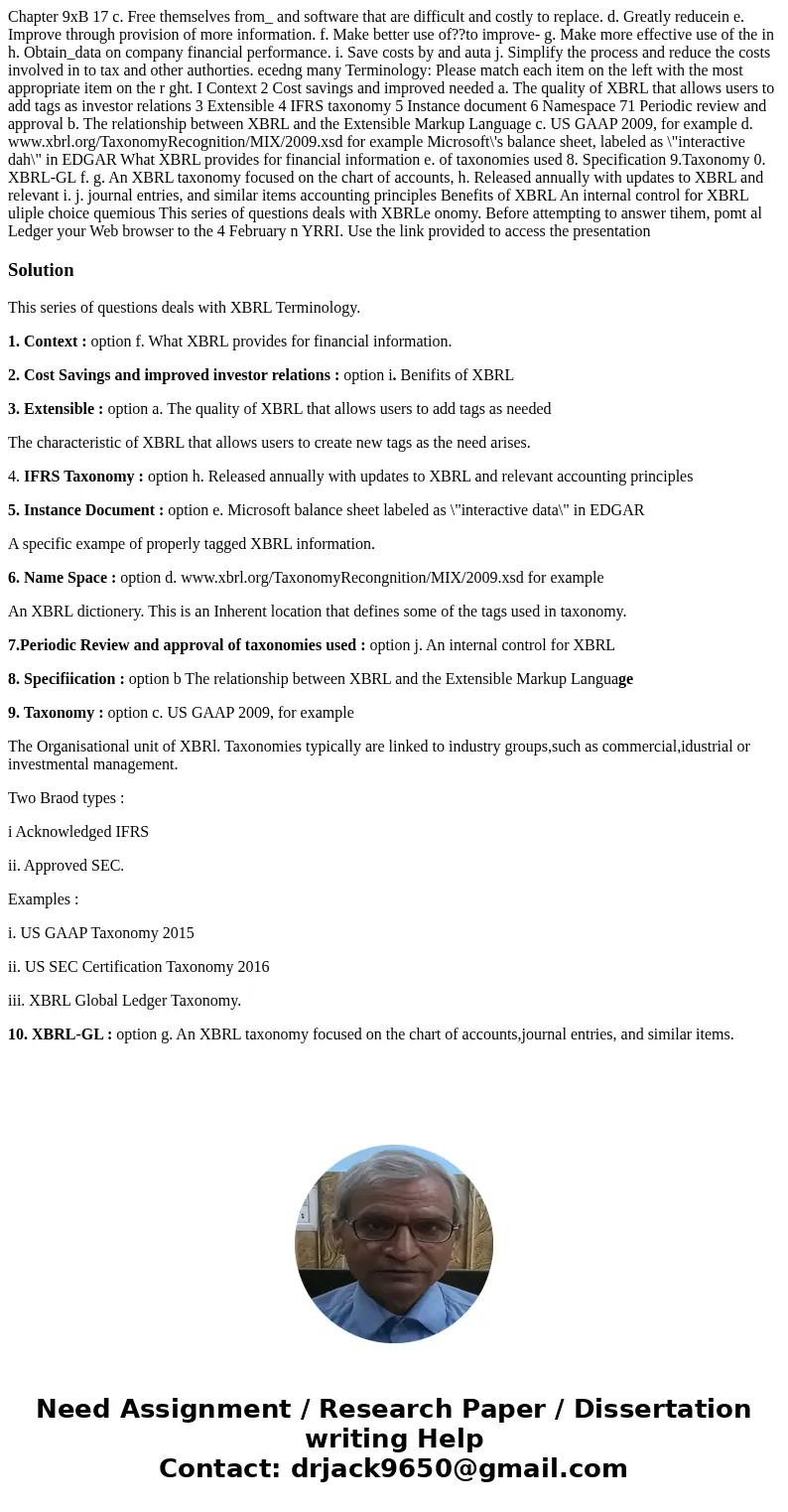Chapter 9xB 17 c Free themselves from and software that are
Solution
This series of questions deals with XBRL Terminology.
1. Context : option f. What XBRL provides for financial information.
2. Cost Savings and improved investor relations : option i. Benifits of XBRL
3. Extensible : option a. The quality of XBRL that allows users to add tags as needed
The characteristic of XBRL that allows users to create new tags as the need arises.
4. IFRS Taxonomy : option h. Released annually with updates to XBRL and relevant accounting principles
5. Instance Document : option e. Microsoft balance sheet labeled as \"interactive data\" in EDGAR
A specific exampe of properly tagged XBRL information.
6. Name Space : option d. www.xbrl.org/TaxonomyRecongnition/MIX/2009.xsd for example
An XBRL dictionery. This is an Inherent location that defines some of the tags used in taxonomy.
7.Periodic Review and approval of taxonomies used : option j. An internal control for XBRL
8. Specifiication : option b The relationship between XBRL and the Extensible Markup Language
9. Taxonomy : option c. US GAAP 2009, for example
The Organisational unit of XBRl. Taxonomies typically are linked to industry groups,such as commercial,idustrial or investmental management.
Two Braod types :
i Acknowledged IFRS
ii. Approved SEC.
Examples :
i. US GAAP Taxonomy 2015
ii. US SEC Certification Taxonomy 2016
iii. XBRL Global Ledger Taxonomy.
10. XBRL-GL : option g. An XBRL taxonomy focused on the chart of accounts,journal entries, and similar items.

 Homework Sourse
Homework Sourse